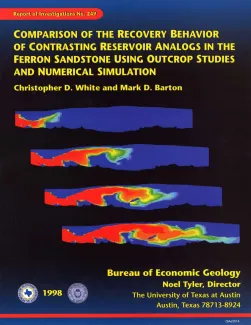
Publication Details
Get the Publication
$10.50
Abstract/Description:
Fluvial-deltaic reservoirs contain large volumes of oil and gas. These reservoirsandstones may have complex stacking patterns, and shales or very fine grained sandstone may form baffles or barriers to flow. As a result, significant compartmentalization or baffling may occur in fluvial-deltaic reservoirs. Because of their close analogy with reservoirs in the Gulf of Mexico region, outcrops of Ferron Sandstone in central Utah have been used to investigate the heterogeneity and possible recovery behavior of high-accommodation fluvial-deltaic reservoirs. Two outcrop data sets were prepared for numerical reservoir simulation using new editing, ordering, and discretization methods. These simulation models usecornerpoint geometries and reproduce important aspects of bedding geometry, shale distribution, and facies patterns. Reservoir simulation was used to investigate the flow behavior of fluvial-deltaic reservoirs, using a commercial black oil simulator to simulate tracer displacements, gas depletion, and gas-water displacements. This analysis shows that fluvial-deltaic reservoirs from different sequence stratigraphic settings may have significantly different production characteristics. The unswept zones within landward-stepping tongues tend to be less continuous than the unswept zones within the seaward-stepping tongues.